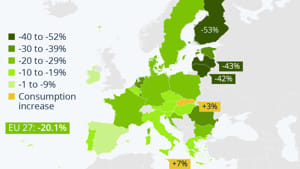European natural gas prices soared almost 40 percent on the risk of a global liquefied natural gas shortage. European wholesale power prices remain below the record highs of the energy crisis but have steadily climbed as the volatility in the international commodity spectrum underscores the fragility of the European energy system.

Unfortunately, the European Union bureaucrats declared the end of the energy crisis as if it were the result of decisive policy action, but the reality is that the energy problem in the EU was only diminished by purely external factors: a very mild winter and the decline in global commodity prices due to the central bank rate hikes. Thus, the energy crisis remains, and the problems of security of supply and affordability of the system persist.
Continue reading The European Energy Crisis May Be Back Soon

